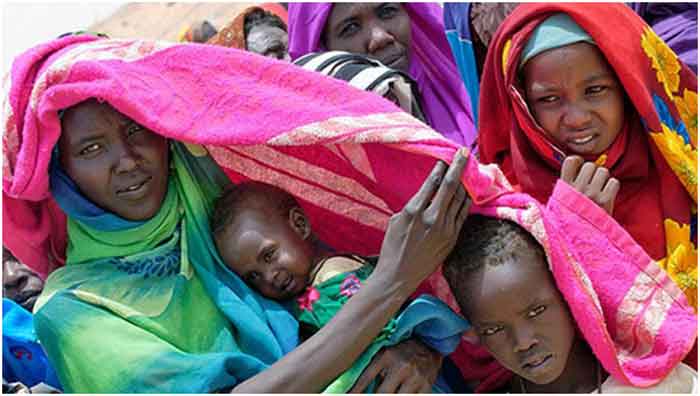Around the world, diverse initiatives are being introduced to manage population changes.

In early 2023, India surpassed China as the most populous country in the world with the latter having 850,000 fewer people by the end of 2022—marking the country’s first population decline since famine struck from 1959 to 1961. While this reduction may seem modest considering China’s 1.4 billion population currently, an ongoing decline is anticipated, with UN projections suggesting that China’s population could dwindle to below 800 million by 2100.
Populations fluctuate through immigration, emigration, deaths, and births. China’s previous one-child policy, enforced from 1980 to 2015, and the resulting gender imbalance slowed its birth rate. The Chinese government is now trying to boost birth rates, including by discouraging abortion.
The Malthusian population growth model, proposed in the 1700s, suggested that populations grow exponentially and outpace resource availability until inevitable checks, such as famine, disease, conflict, or other issues, cause it to drop. During the high global population growth rates of the early 1960s, these concerns abounded. Yet around the world, population growth has slowed dramatically, and in China and many other countries, natural decline is already underway.
A 2020 study published in the Lancet medical journal revealed that based on current population trends, more than 20 countries are on track to halve their populations by 2100. The Pew Research think tank, meanwhile, declared that 90 countries will see their populations decline by 2100, while the Center of Expertise on Population and Migration (CEPAM) predicts the global population will peak at 9.8 billion around 2070 to 2080.
The fear of a shrinking and aging population looms over governments and economists alike. Increased payments toward pension and social welfare systems will strain a reduced labor force, while younger populations also contribute more to economic growth and innovation. Countries may also experience a reduction in their global influence—not least because of a smaller population available for military service.
Various metrics gauge fertility and birth rates, but the total fertility rate (TFR), which measures the number of children a woman will have in her lifetime, is the most common. Yet achieving replacement level fertility rates, typically 2.1 children per woman, has proven challenging.
The decline in global fertility rates can be attributed to societal and cultural shifts, family planning initiatives, wider access to contraception, improved infant mortality rates, increased cost of child-rearing, urbanization, delayed marriages and childbirth due to educational and career pursuits, and social welfare systems reducing reliance on familial support.
A case in point is Japan, whose population peaked at 128 million in 2008 and has since shrunk to below 123 million. It is poised to decrease to 72 million by century’s end, its decline sustained by a low fertility rate, an aging population (almost 30 percent of the population is 65 or older), and limited immigration. Initiatives to slow this decline include changing immigration laws and government-sponsored speed dating.
Remarkably, despite hitting a record low in 2022, Japan’s TFR is now higher than China’s and South Korea’s. Since 2006, South Korea has invested more than $200 billion in establishing public daycare centers, free nurseries, subsidized child care, and other initiatives to boost its TFR. But at 0.78, South Korea’s TFR remains the world’s lowest. South Korea’s government also introduced immigration reforms in the early 21st century, all while leading the world in automation with 1,000 robots per 10,000 employees—more than double of second-ranked Japan.
In Europe, efforts to boost populations have occurred for decades. For instance, Romania criminalized abortion and banned contraception except for certain medical conditions in 1966. Consequently, illegal abortions increased, and Romania had the highest maternal mortality rate in Europe in the 1980s as a result of this. While Romania’s TFR stabilized at 2.3 by the late 1980s, it collapsed in the 1990s, alongside a population exodus through emigration that has been sustained after Romania joined the EU in 2007.
Other Eastern European nations have experienced similar TFR declines and emigration. Contrastingly, Western European countries have managed to grow slightly since 2000, but largely only due to immigration. Even so, countries like Italy have seen population declines, spurring initiatives by the government to offer houses to foreigners for as little as 1 euro in an effort to repopulate small towns.
The U.S. has a lower average age than most European countries and saw a rebound in TFR rates in the 2000s. But this dropped after the recession in 2008 and it has never recovered. And unlike European countries, life expectancy continued to decline after COVID-19. Immigration has mitigated these issues, but as in Europe this has become increasingly political, and the U.S. population growth rate has slowed considerably. While there is no official policy to boost birth rates, the U.S. promotes family planning initiatives abroad. Republican and Democrat administrations have meanwhile oscillated since 1984 between enforcing and rescinding the Mexico City Policy, requiring foreign NGOs to not “perform or actively promote abortion as a method of family planning” in order to receive U.S. government funding for family planning initiatives.
Russia’s TFR faced a rapid decline following the collapse of the Soviet Union, reaching a low of 1.16 in 1999, and causing a population decline. However, government initiatives saw it rebound to 1.8 in 2014 before falling again. The Kremlin announced a desired TFR of 1.7 in 2020, and increased payments for parents of at least two children. To further stabilize its population, Russia has also relied on immigration and taking parts of Ukraine.
Iran’s birth rate policies have fluctuated over the last few decades. During the 1950s, Iran implemented fertility controls but abolished them after the 1979 Islamic revolution. However, they were reintroduced in the late 1980s to release pressure on the economy. Once seen as a “success story,” Iran’s TFR fell faster than anticipated to 1.6 in 2012. That year, the government began attempts to boost the birth rate by limiting access to birth control, abortion, and vasectomies.
Although India now holds the mantle of the world’s most populous country, its TFR is now below replacement level. Nonetheless, its population will continue to grow, fueled by a large, youthful population—a demographic feature increasingly common across the Global South. While India’s population is eventually projected to begin declining by the 2060s, India is currently managing its youthful population through initiatives such as promoting employment opportunities abroad.
The perils of not utilizing a large working population extend beyond unrealized economic potential. Without economic prospects, large youthful populations can generate significant social and political upheaval. Neighboring Pakistan is trying to reduce its population growth to avoid exacerbating strains on resources, infrastructure, education, and health care systems.
Pakistan’s concerns are similar to much of Africa. Aside from Afghanistan, the top 20 countries with the highest TFR are all located in Africa. Nigeria’s population is projected to grow from 213 million currently to 550 million in 2100, while some projections see half of all births in Africa between 2020 and 2100. Even so, family planning programs have helped slow growth in recent years across the continent.
Contrastingly, the experience of countries where campaigns supporting fertility have seen some success (including Germany, the Czech Republic, and Hungary) suggests direct financial incentives, tax breaks, cheap/free child care centers, generous maternity/paternity leave, housing assistance, and more flexible approaches to work-life balance are successful at interrupting decline.
While gender equality has often been cited as a barrier to higher birth rates in the past, this no longer seems to be the case. Highly educated women had the lowest fertility rate in the U.S. in 1980, for example, but this was not true in 2019. Additionally, Mongolia’s TFR declined from 7.3 kids per woman in 1974 to under two by 2005. But Mongolian birth rates then increased to around three children per woman by 2019, despite Mongolian women becoming better educated, increasingly represented in traditionally male-dominated fields, and having access to improved rural maternal health services.
Nonetheless, Mongolia’s recent population boom has resulted in school crowding, pollution, housing problems, and other issues, and points to the need for flexible approaches to population growth, decline, and stabilization.
With a median age in Europe of 44.4 years old and a median age of about 19 in Africa, different parts of the world will require different measures to deal with fluctuating population numbers this century. China is not alone in the perception that it will grow old before it grows rich, and such countries will develop their own methods to deal with aging societies. Seeking the creation of long-term sustainable approaches to population management, which avoid coercion but also provide help for those raising children, should be prioritized.
John P. Ruehl is an Australian-American journalist living in Washington, D.C. He is a contributing editor to Strategic Policy and a contributor to several other foreign affairs publications. His book, Budget Superpower: How Russia Challenges the West With an Economy Smaller Than Texas’, was published in December 2022.
This article was produced by Globetrotter.













































